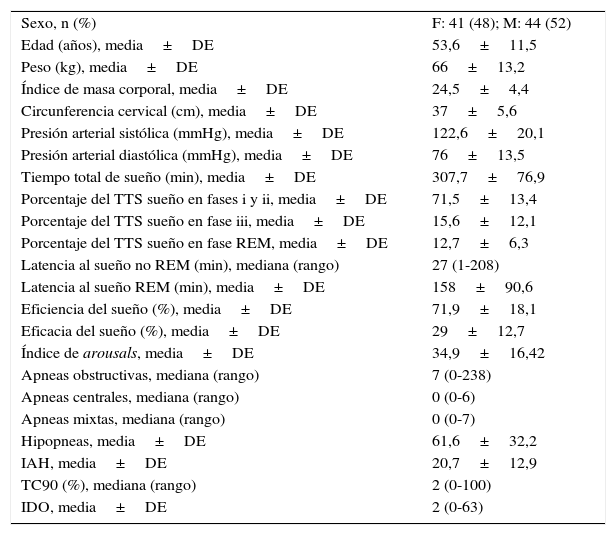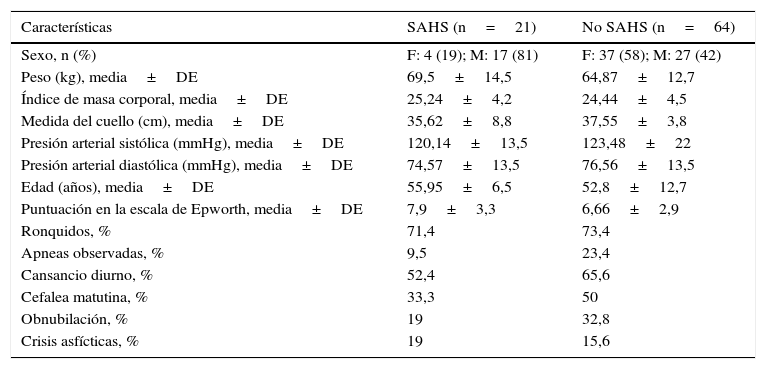Aunque los trastornos respiratorios durante el sueño son frecuentes en pacientes con insuficiencia respiratoria crónica grave (IRCG), hay poca información sobre su prevalencia. Nuestro objetivo ha sido describir la prevalencia y características del síndrome de apnea-hipopnea del sueño (SAHS) en estos pacientes.
Material y métodosEstudio prospectivo observacional de pacientes con IRCG incluidos en lista de espera de trasplante pulmonar a los que se les realizó una polisomnografía estándar.
ResultadosCiento cinco pacientes fueron valorados. Ochenta y cinco cumplieron los criterios de inclusión. La prevalencia de SAHS fue del 24,7%, y un 19% de ellos eran graves. La enfermedad respiratoria más frecuente fue la EPOC (62%). El SAHS se relacionó con el sexo masculino (p=0,002), el peso (p=0,013), el IMC (p=0,034) y la circunferencia cervical (p=0,01). Aunque la mayoría de los pacientes presentaron algún síntoma indicativo de SAHS, la media de puntuación en la Escala de Somnolencia de Epworth fue baja.
ConclusionesHemos observado una alta prevalencia de SAHS en pacientes con IRCG, sin datos clínicos que puedan evidenciar su existencia, por lo que consideramos adecuado realizar estudios de sueño dada la baja sospecha clínica pretest.
Although sleep disordered breathing is common in patients with a severe chronic respiratory insufficiency (SCRI), there is few information on its prevalence. Our aim was to describe the prevalence and characteristics of the obstructive sleep apnea-hypopnea syndrome (OSAHS) in these patients.
Material and methodsProspective and observational study carried out on patients with a SCRI included in a waiting list for a lung transplantation and who had undergone a standard polysomnography.
ResultsA total of 105 patients were examined, of which 85 met the study's inclusion criteria. The prevalence of the OSAHS was 24.7%, with 19% of cases being severe. The most common underlying respiratory condition was COPD (62%). The OSAHS was linked to the male gender (P=.002), weight (P=.013), BMI (P=.034) and neck circumference (P=.01). Although most patients experienced symptoms suggestive of an OSAHS, the average score obtained in the Epworth Sleepiness Scale was low.
ConclusionsWe observed a high prevalence of OSAHS in patients with a SCRI but without clinical data suggestive of its diagnosis; hence, we believe that sleep studies should be carried out in these patients given the low pre-test clinical suspicion of the disease.
Artículo
Comprando el artículo el PDF del mismo podrá ser descargado
Precio 19,34 €
Comprar ahora









